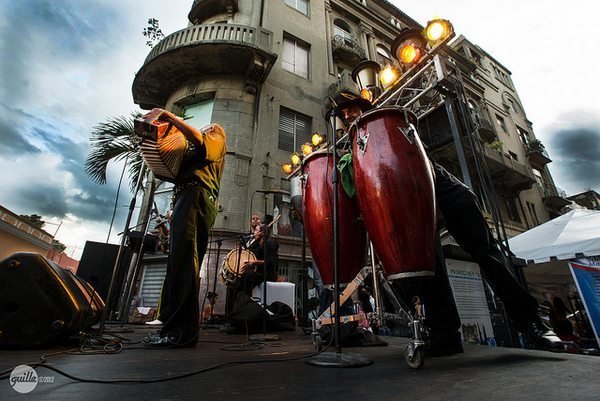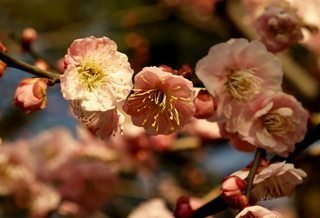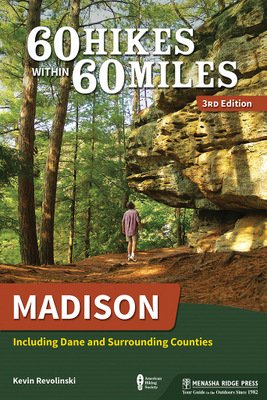Merengue: The Rhythm and Soul of Dominican Republic

Hips sway. The rhythm is fast, the beat is steady and even. The partners whirl each other, never letting go, but winding up like pretzels before magically returning to their original dance position. The bass and percussion are impossible for the feet not to follow – unlike the sometimes difficult count of salsa for the uninitiated, for example – and a metallic scratching carries over the top, pushing everyone on with the rhythm of a galloping horse. It’s not just the Caribbean heat that’ll make you sweat in the Dominican Republic; the irresistible merengue draws everyone to the dance floor.
When describing Latin music of most genres, the word “sensual” is likely to come up, and so is the case with merengue. Merengue, the national music and dance of the Dominican Republic, offers much of the elegance and sensual movements as salsa does, but merengue also often brings a bit of speed and energy to it and a more direct 2/4 beat. And as for history, it hearkens much further back, into the 19th century.
Roots of Merengue
While the Dominican Republic has put its name on merengue, it is unlikely that the music and dance originated there. Some believe Cuban marching bands brought a style called upa to Puerto Rico in 1842, and while a form of merengue rose and fell on that island – the upper class found it offensive and corrupting — it also took root in rural populations of Dominican Republic.
While the island nation’s lower classes and villagers picked it up, it was also met with distaste by the Dominican upper class. The commonly vulgar nature of the song lyrics sometimes provoked social campaigns to outlaw it. In 1875, President Ulises Espaillat banned merengue from social halls and it soon disappeared from urban culture. But the music and dance survived and became so much part of life in the Cibao region, that today the area is known as “the Cradle of Merengue.” Nico Lora, a popular turn-of-the-century folk musician — a button-accordion player — and songwriter who composed thousands of songs, may deserve much of the credit. A boost of nationalism and indignation brought on by the United States’ occupation of the republic from 1916 to 1924 may have also helped.
The appeal of the music was well established thereafter. So much so that Rafael Trujillo, the republic’s tyrannical leader from 1930 to 1961, used accordion players on his campaign trail as he tried to appeal to the masses. When he came to power, he decided to declare merengue the national music, and his brother, who operated state radio, helped spread its popularity.
The vulgar lyrics and the reedy “noise” of the accordion, however, were still a tough sell for society’s elites. That changed in 1936. Composer and singer Luis Alberti adapted a previous melody to some new lyrics to create “Compadre Pedro Juan.” The song grabbed the entire nation, regardless of social class, and merengue truly became the rhythm and dance of the Dominican people.
The Instruments of Merengue
In the early days of merengue, the bands were simple with only about three performers. The central melodies were carried by the tres and cuatro guitars – Spanish-influenced instruments from Cuba and Puerto Rico, respectively, named for their string configurations. Percussion consisted of a tambora (a two-sided drum), and a güira. To this day the güira stands out. It is a percussion instrument fashioned from a metal tube with a screen-like surface to it. A homemade version might take a tin cylinder and pound nail holes into its sides. The player uses a type of metal brush across the surface to get a sound somewhere vaguely between a hi-hat and maracas, and plays with a caballito or “little horse” rhythm.
When Germans brought the accordion to the island in the late 19th century, it began to replace the guitars. The music in this simplest form has become known as merengue típico. The güira, of native Taino origin, the tambora, of African origin, and the European accordion were thus combined and now represent the roots of the modern people and culture.
But in the latter half of the mid-twentieth century, an alternative style of merengue evolved. Tatico Henríquez, considered the godfather of modern merengue típico, brought in the electric bass and a saxophone that would play harmonies to the accordion. Thanks to radio broadcasts, his music became widely known and a new generation of musicians emulated him. Before long there was merengue de orquesta or big band merengue. Moving beyond one sax player, bands took on whole horn sections. The bass guitar became the norm as did a modern bass drum and hi-hat. While típico can still be found, the recording industry has taken big band merengue to the larger international audience.
To Dance Merengue
In its simplest form, merengue dancing isn’t that hard to pick up. (To get good at it is, of course, another matter!) Partners face each other in a closed position. Typically the man leads, with his right hand on his partner’s waist, while holding the partner’s right hand with his left hand at about eye level. The dancers bend their knees slightly left and right as mirror images of each other, thus making the hips move sensually left and right. The dancers may step sideways or circle each other, and they may step back from each other to an open position to perform turns without letting go of each other’s hands or releasing one hand. The speed and complexity of these turns can get rather dizzying. But throughout, the dancers keep their heads up and maintain a rather proper, upright posture through their torsos in counterpoint to the sensual movements at the hips. It’s a joy to watch; an ever great joy to participate in.
The All-Stars
Merengue has gone far beyond the Dominican Republic. Puerto Rico has an equal passion for it and has contributed many popular musicians to the genre. The United States – especially in places like New York City and Miami – also picked it up, as did Colombia, Venezuela, and many other nations.
Born in 1880, Francisco “Ñico” Lora made accordion playing popular. He was an excellent improviser, often composing songs on the spot. His songs are standards for típico musicians. Godfather of merengue Tatico Henríquez and Luis Alberti are legends of the early and mid-twentieth century. While less known in the larger world, merengue típico is alive and well. El Prodigio, a new generation accordion player, gets raves for his talents and makes forays into the pop scene with that traditional style.
Search for Merengue Music on Amazon.com
The towering – he’s 6′ 7″ — Juan Luis Guerra is perhaps the most famous of all the modern Dominican merengue stars, and he has the acknowledgements to back up that claim with over 20 million records sold, 15 Latin Grammy Awards, two Grammy Awards, and two Latin Billboard Music Awards. Guerra, an accomplished musician and songwriter, has crossed into and fused a number of musical genres, but is best known for the national music of his homeland. His “Ojalá Que Llueva Café” (“I Wish It Would Rain Coffee”) is a classic.
Women have also made their mark on the genre. Milly Quezada, a native of Santo Domingo who grew up in New York, is known as the Queen of Merengue, and has several Latin Grammy Awards to her name.
Hailing from Puerto Rico, Grupo Manía came on the scene in 1993. Founded by brothers Héctor and Oscar Serrano with Edwin Serrano and Alfred Cotto, the band’s big success came a year later when Elvis Crespo stepped in as lead singer. Three years after that Crespo left to pursue his rising solo star.
Finally, one of the prides of Puerto Rico is the Woman of Fire or La Mujer de Fuego: Olga Tañon. Her career began with several popular merengue groups in the 1980s, but took to the stars when she went solo in the 1990s. Tañon has won 28 “Premio Lo Nuestro Awards,” which is more than any other Latin musical artist in any genre.
Check out this Spotify playlist of great merengue songs





 ORDER YOUR COPY TODAY!
ORDER YOUR COPY TODAY! ORDER YOUR COPY TODAY!
ORDER YOUR COPY TODAY!